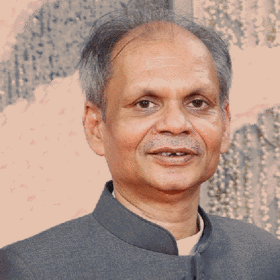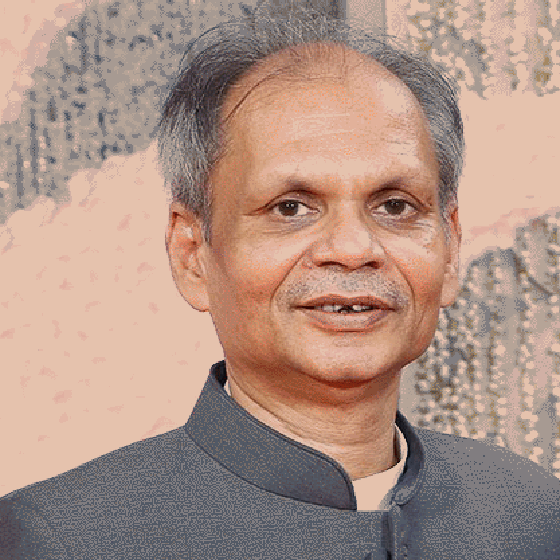An Attempt at Interpretating Maha Mrityuanjaya Mantra

The following Mantra of the Rgveda (vii. 59.12) is known from hoary antiquity as the Mahāmṛtyunjaya Mantra
त्र्यम्बकं यजामहे सुगन्धिं पुष्टिवर्धनम् ।
उर्वारुकमिव बन्धनान्मृत्योर्मुक्षीय मामृतात् ।।
The very syllables of the Mantra, namely as indicate the sense and the substance of the Mantra. Our problem is how to interpret the Mantra so that the philosophy of Immortality in consonance with the philosophy of the Divine Grace of the Being implied here is made explicit. It is rather disappointing that the Vedic exponents of the age-old traditional and the modern non- traditional orders offer no clue to the understanding of the philosophy of Death and Deliverance from Death intended by the Vedic seer of the Mantra with the result that the whole Mantra remains but a series of syllables of faith in the saving grace of the Vedic deity referred to by the substantive term “Tryambakam’ characterised by the attributive terms i.e. ‘Sugandhim’ and ‘Pustivardhanam. The concepts of Death and Immortality of the six orthodox systems of Indian Philosophy also do not explain the spiritual experience of freedom from bondage embodied in the Mahāmṛtyunjaya Mantra. It is in the light of the Saiva-Sakta Philosophy of Kashmir that we know what the word ‘Tryambakam’ means in the ultimate sense and what are its characteristics which are emphasized by the adjectives, namely, ‘Sugandhim’ and ‘Puştivardhanam’. If we keep the context of the Rigvedic Mantra in mind, we know that the Divine Personality termed as the ‘Tryambakam’ happens to be an appellation of “Rudra’, the deity of death and destruction. But this deity of death and destruction in the Vedic age itself under- goes a transformation when the Yajurveda describes as having the Benign form (fa) of Bliss, the contemplation of which leads to the removal of all sins and sufferings. It stands to reason, therefore, that the ‘Rudra’ is the ‘Siva’ and that the Rudra-Siva synthesis is the starting point of the Śaiva-Sākta philosoph of Kashmir. According to the Saiva-Sakta philosophy trends of Kashmir, the concept of the ‘Tryarshaka’ is the concept of the ‘Siva’ with his three-fold Saktis of ‘Iccha’ (absolute willpower), Jana (all-embracing absolute consciousness) and ‘Kriya’ (absolute universal creation energy). Śiva in die philosophical contemplation of the Kashmir Saiva savant Shri Somananda Nath is the principle of ‘PraKasa’ or the self-luminous and self-seeing universal consciousness. The following verse of the Sivadṛşti bears witness to the above
आत्मैव सर्वभावेषु स्फुरनिर्वृतचिद्विभुः । अनिरुद्धेच्छाप्रसरः प्रसरद्दृक्क्रियः शिवः । ।
Or, that it is Śiva indeed who is the inmost Being of all the becomings as it is He who is the Blissful all-embracing consciousness manifesting His irresistible power of will and knowledge and action in ways unthinkable by the human mind.
It is the above Śivadṛṣți of Shri Somananda which his great exponent Shri Utpalacharya makes crystal clear in the following lines of his ‘Vivṛti’
एकमेव एक एव शिवः स्थितः तेन तेन प्रकारेणानेक शक्त घटपटादिपदार्थात्मक त्वयात्तस्य ।
चित्तत्त्वमनन्तविश्वरूपमिति ।
स्फुरद्रूपता हि सत्ता ।
स्फुरद्रूपता च प्रकाशमानता ।
ततश्च जडता तावन्नास्ति ।
प्रकाशमानता हि प्रकाशाभेदः ।
प्रकाशश्चानपह्नवनीयः सर्वप्रतिष्ठारूप: परमार्थः ।
सर्वेषां च घटादीनां प्रकाशरूपतया विशेषाभावादेकप्रकाशात्मता, तत एवैकशिवत्वम् । 2
Or, that it is the One Divine Being, the Siva who is ensouling, in innumerable ways, all the diversities of the objective world. To put it in a nutshell, it is but the One Reality of consciousness that is cognized as the Manifold or the entire order of the universe. To be or to exist means to be Self-shining and Self-seeing. It means, therefore, that there can be no talk of inert objectivity about this Reality. To be Self-effulgent means to be one with Effulgence (of consciousness) cannot be ignored as it is the very basis of all that is and all that becomes. It is the Ultimate Attainment, to be sure. All the objects of the world, accordingly, are the diverse forms or facts of the same Universal Effulgent Consciousness which means that it is the One Śiva alone that exists.
In the light of the above concept of Siva we have to understand the terms ‘Tryambaka’ to stand for the Universal Self ever transcendent and ever immanent in the world of becoming which in reality is His Lila or play and reveals His Ananda Sakti or His Svātantrya in His incessant Self-manifestation. The following verse of Abhinavagupta with which he begins his Isvara-Pratyabhijñā-Vimarsini seems to contain the gist of the Mahamṛtyunjaya Mantra-
निराभासात्पूर्णादहमिति पुरा भासयति यद् द्विशाखामाशास्ते तदनु च विभङ्क्तुं निजकलाम् । स्वरूपादुन्मेषप्रसरणनिमेषस्थितिजुषस्तदद्वैतं वन्दे परमशिवशक्त्यात्म निखिलम् ।।
Below, we attempt to suggest in the light of the Bhaskari of Bhaskarakantha the sense of what Abhinavgupta, the Mahamaheśvara says in the above benedictory verse.
We bring to our recognition the Paramasiva, the Unity of Reality, which is the Universal Self- luminous Consciousness always being energized by his Saktis or infinite powers of Self-manifestation. This ‘Paramasiva-Sakti’. Unity in its real nature has no distinction of our discussive thinking as Siva and Sakti and hence It can be linked to a calm unruffled sea of universal consciousness. It is from this One Infinite Unruffled Sea of Universal Consciousness that the Sakti, as distinct from Śiva, manifests Herself in diverse forms to be re-composed in the end in Her counterpart, the Śiva. The manifestation of the Unmanifest means the self-secing of the self-luminous consciousness. The self- seeing aspect of the self-shining consciousness ensouling the entire order of the universe is what we mean by Sakti.
To conclude, we may say that the Rudra, the Tryambaka is in the ultimate analysis, the Siva in inalienable association with Sakti, the Tryambika. The well-known Durga-Saptasati contains the terms ‘Trinetra’, ‘Trilocana’ and Tryambika for Sakti, the Mother of all that is and that is to be. So, the ‘Yajana’ of ‘Rudra’, the ‘Tryambaka’ which in the Vedic ages may have been an elaborate sacrificial offering, is given place in the period of the Saiva-Sākta Āgamas and Saiva-Sākta philosophies to the Self-realization of the aspirant after liberation which is the same as self-recognitive experience of Bliss Eternal and Freedom Unfettered. The advent of this state in the life of the aspirant after unending Bliss and Happiness is what is called ‘Jivanamukti’, the ultimate attainment of the Śiva- Sadhana or the Śakti-Sadhana. In this ‘yajana’ there is no distinction of caste and creed. The essence of this ‘yajana’ of Tryambaka, in the words of Yogaraja, the disciple of Kṣemarāja who had the illustrious Abhinava Gupta as his teacher is – ‘ त्वामेव स्वात्मानं पराहन्ताचमत्कारस्वरूपं समाविशामि ‘ or ‘ चिदानन्दघनो स्वतन्त्रोऽस्मीति भावनम् । ‘
In the light of the above sense of the ‘yajana’ of Śiva, the Tryambaka the epithets of ‘Sugandhi’ and ‘Puştivardhana’ are very significant. Tryambaka characterised by the epithet of ‘Sugandhi’ means, therefore, that It is a universal effulgent consciousness drawing towards it the entire order of the universe to partake of its unique fragrant taste of Bliss Eternal. When the diversities of our normal perception are nothing more than the leaves and buds and flowers of the Tree of Self-Seeingness, it goes without saying that the Tree is Sweet-smelling in that it is desired by all that is and that becomes. The Tryambaka is this Tree that is full of etherial fragrance emanating from the five-fold Bhūtas of Prthivi, Vayu, Agni etc., which are but the manifestation of the fragrance of the Effulgence of Uni- versal Consciousness, the real self. The epithet ‘Puslivardhana’ stands for the manifestation of Anda- catuṣṭaya of Śakti and Māyā and Prakṛti and Pṛthivi through which the Tryambaka or the Rudra-Śiva- Bhairava reveals His Ananda Sakti or His Mahaiśvarya. Shri Mahashvarananda, a Šaiva savant in his Mahāratha-Mañjarī hints at the different sense of the ‘Pustivardhana’ epithet when he says
‘इच्छाज्ञान क्रियात्मक विश्वविकल्पपर्यायकोणत्रय सामरस्यलक्षणेन मांसल मधुना अत्यन्तपरिबृंहितंत्मानमुल्लासमाह्लादातिशयमनुभवति 4
or that the Pusli is the ‘अन्तर्मनसंविदानन्द-स्पन्दसंधुक्षणरूपमधु’ which constantly energizes the self in the Self-Seeingness of His Ananda or Svätantrya.
Now, “yenja 54′ becomes clear to our mind since ‘Sarirayoga” or the state of embodiness of the Being is the ‘Bandha’or bondage and the tearing as under of this ‘Bandha’ or bondage is Mukti or Amaratva or Immortality. The following verse of the Paramartha-Sāra of Abhinavaguptapadacarya brings to our mind the real sense of the Mahāmṛtyunjaya Mantra-
भिन्नाज्ञानग्रन्थिर्गतसन्देहः पराकृतभ्रान्तिः । प्रक्षीणपुण्यपापो विग्रहयोगेऽप्यसौ मुक्त: ।।
The ‘yajana’ of the Tryambaka in the form of the Tryambika is the Sarana Varana of the Mother, the Sarveśvariśvari of the Durga-Saptasati. The Aghora Saint Shri Baba Bhagavana Rama living at his Sarveshvari-Nivasa Ashrama at Padao, Rajghat, Varanasi has further simplified this ‘yajana’ of Tryambikā, the śakti of Tryambaka, as ‘सर्वेश्वरि ! त्वं पाहि माम् शरणागतम् ‘ So we see here the old wine of the Mahāmṛtyunjaya Mantra contained in the new bottle of the Sarveśvari-Sarana Varana to which everybody is entitled irrespective of caste or creed or state or status in life.

